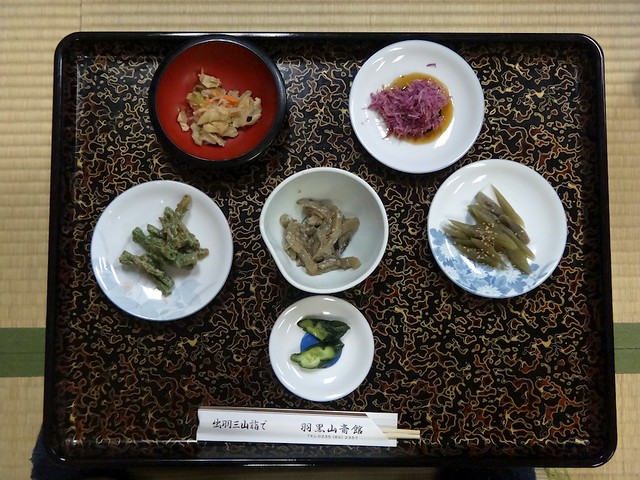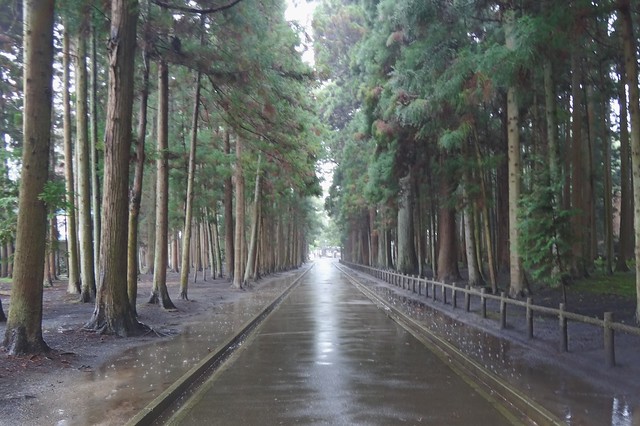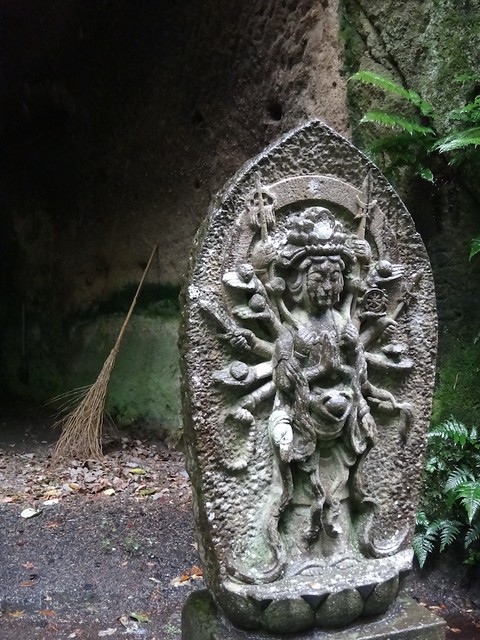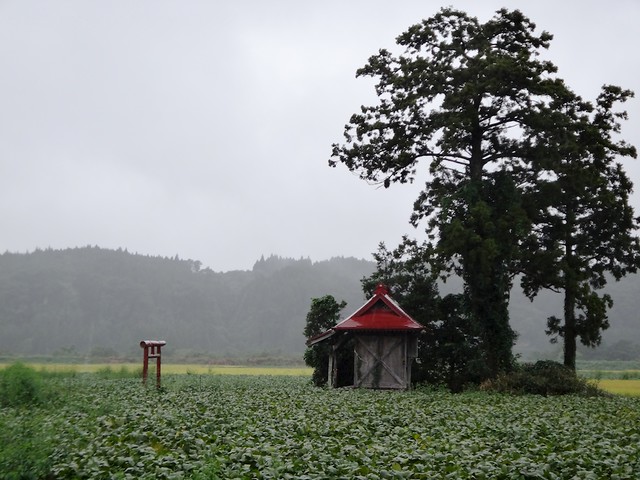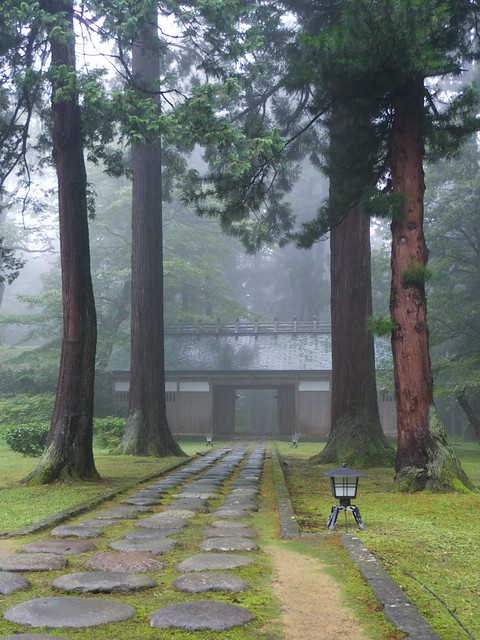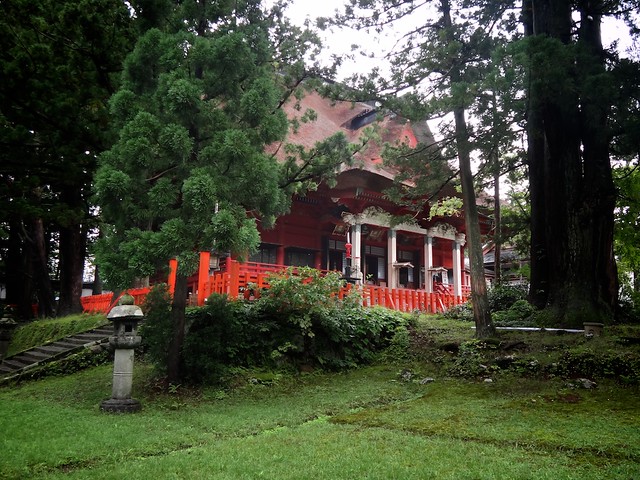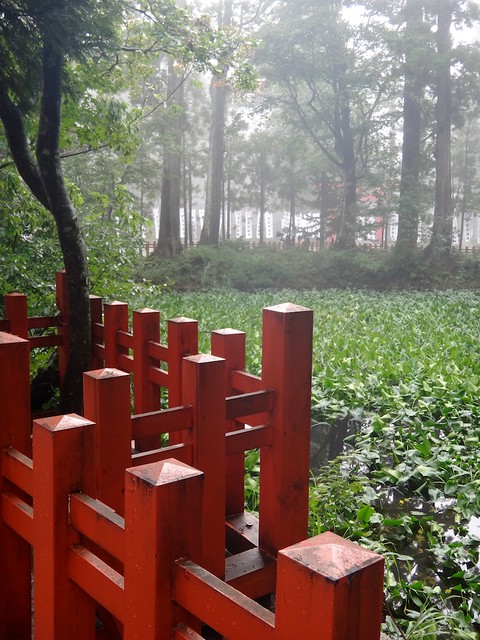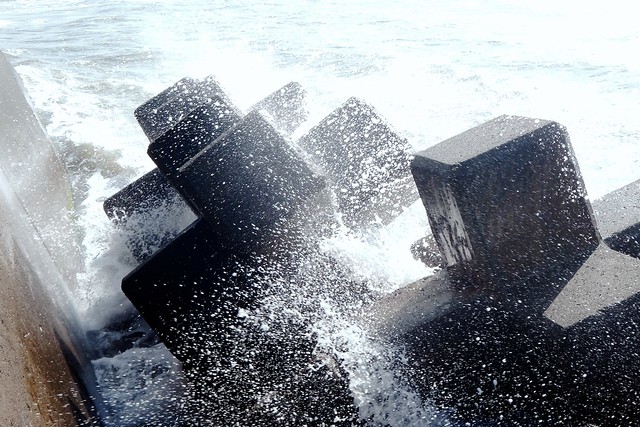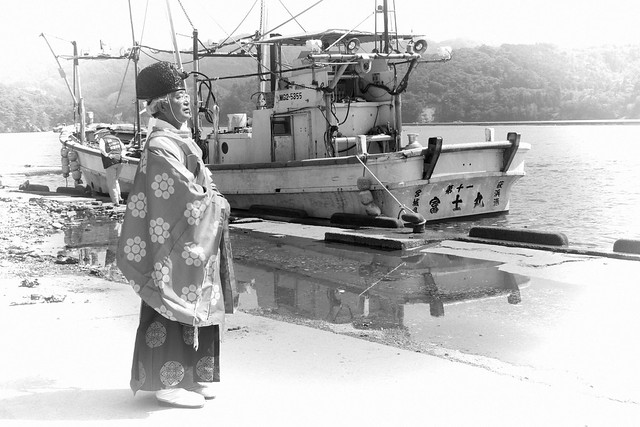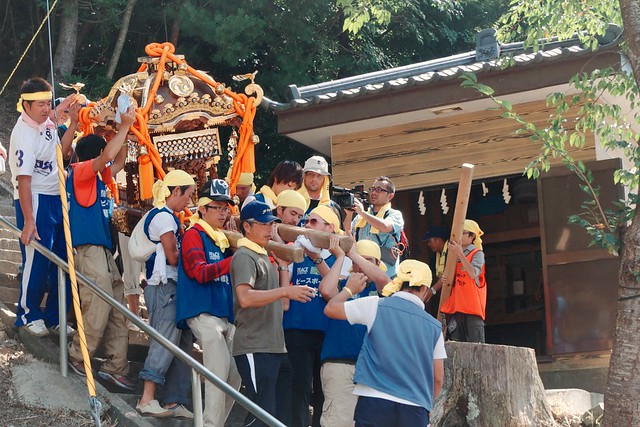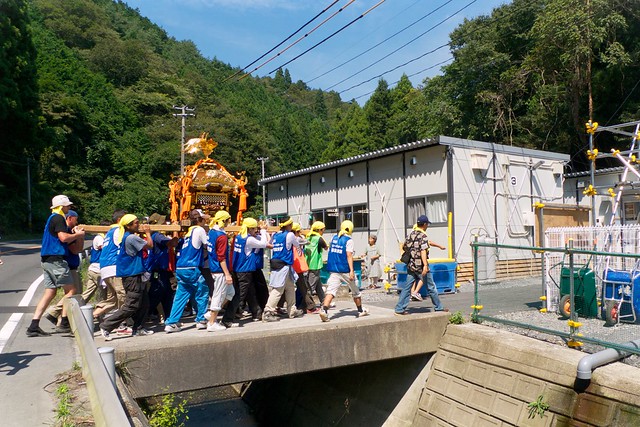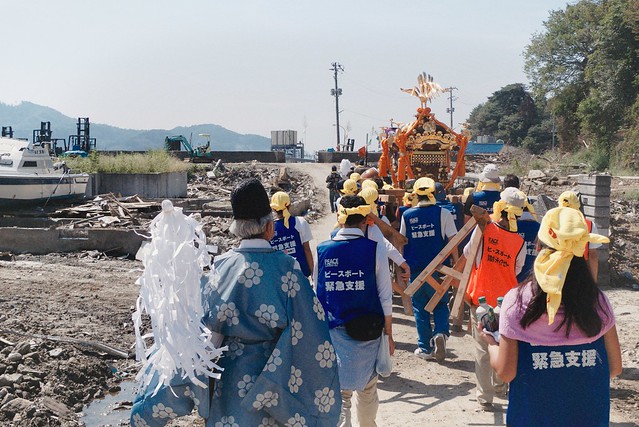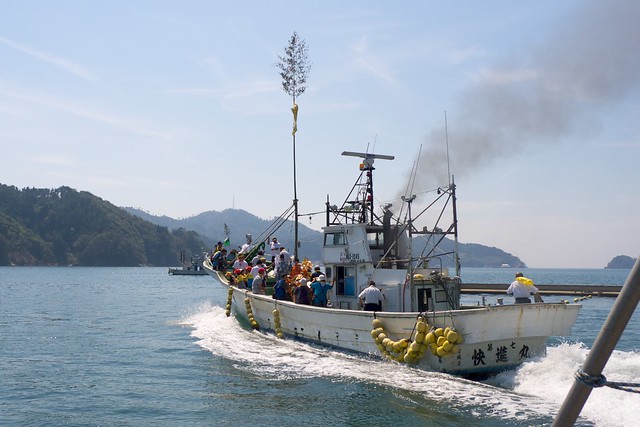We had another week in Ishinomaki recently. It wasn't quite as much fun as
the first time, but perhaps that's only to be expected after I had spent so much of the previous week splashing about on a boat. [Incidentally, another set of blog posts on our previous week from another volunteer's POV can be found
here.] As I mentioned before, we had been planning 2 weeks volunteering, followed by a cycling tour. But
Peaceboat rather bizarrely forbade it, so we just went up for a single week, a little apprehensive about their penchant for arbitrary rules and inflexibility. Of course, the advantage over self-organised volunteering is that they do provide a high level of support which makes things very easy.
A typhoon was approaching as we went up on the Friday night, so instead of camping, we were taken to the abandoned factory ("Kasuka Fashion") where Peaceboat had been generally housing the short-term volunteers.

It had been flooded to a height of about 5' 6", according to the tide mark on the walls. So I'd have been fine!

The weekend group who were originally going to stay there had had their trip cancelled, as the weather made it unclear if they would be able to work, although as it turned out we had nothing more than some showers and a stiff breeze. Even after the typhoon had moved away, we stayed put and other groups went to the campsite. The factory had some notable advantages - electric lighting in the evening, hot showers, and a wider range of shops and restaurants within easy walking distance (we were close to the border between tsunami devastation, and business pretty much as usual) - but the campsite had been rather relaxing and pleasant, at least now the memories are fading of the hot sleepless nights and 4am dawns!
During the evenings we wandered around the neighbourhood admiring the sunsets

and also found a rather good restaurant -
Torifuku - which specialised in grilled chicken in various guises (including the "cut up with scissors" variety):

Our group was also rather younger than previously - a higher proportion of English (conversation) teachers (think
Charisma man) and students, compared to the mid-career (ok, middle-aged, if you like) expats who we had mostly worked with previously (though if you follow the previous link, you'll see that we weren't all oldies). Not that there is anything wrong with youthful exuberance, Peaceboat obviously relies on it to a large extent (albeit
with some resulting naivety). But it did mean we had a bit less in common with them, and it sometimes seemed like this group were more interested in each other than in their surroundings, which although slightly neater than last time, still had huge areas of devastation.

The first couple of days we were clearing up around a couple of houses in
Gozo, near to Nagatsura.

This area had only recently become accessible following the reconstruction of a bridge, and the houses were beyond repair so our goal was really just to make things look a bit less devastated for those trying to re-establish their lives.

On the way there each day we passed
the elementary school at Okawa where 74 pupils out of about 100 had been killed.

There's a big hill right next to the school, but probably no-one expected such a big tsunami 4km inland.
The rest of the week was spent in the small village of Oginohama, preparing for an annual festival. Jules has already
covered this in some detail, and there is also the official Peaceboat write-up
here, so I'll be brief. As jules said, while it was worth doing, it seemed to us like rather too much effort for relatively little benefit. We could easily have got things into a reasonable condition in half the time and then done something else useful with the remaining days. Some other groups of volunteers were helping to establish some seaweed (wakame) farming which sounded rather more productive and interesting. As it was, by Thursday afternoon we were hanging around looking around for things to do and ended up clearing up a nearby stretch of beach. We did try to tell the leaders that we would prefer to do something more useful, but it fell on deaf ears. I realise that we aren't really there to enjoy ourselves, but we were all donating our time and I don't think it is unreasonable to hope that we should be gainfully employed. One of the organisers did admit after the event that perhaps it was a little excessive.
 Taylor Anderson
Taylor Anderson's family turned up one day and joined in with the volunteering (not actually working with us, but some other Peaceboat group). Introduced to us only in Japanese, I didn't realise then quite what was going on there, but as the link tells, she was an (the only?) American who had died in the tsunami, right there in Ishinomaki where she was working on the
JET program.Friday was festival day, and we got to carry the mikoshi around what remained of the town to visit the handful of buildings that were still standing (and the emergency housing that has now been built).


We also sailed out in a convoy to pray for the oysters. All in all, it was fun, but it felt a bit excessive. Interestingly, one of our team who is staying for a longer period, seems to have moved over to one of the ad-hoc volunteer groups who are still camping at the University (until the end of the month, when the site is closing). I wouldn't want to put people off too much - it was still an interesting week and Peaceboat does make it really very easy for volunteers - literally all you have to do is pay ¥1000 as a small contribution towards costs, for which you get transport, food, accommodation, and necessary tools.

